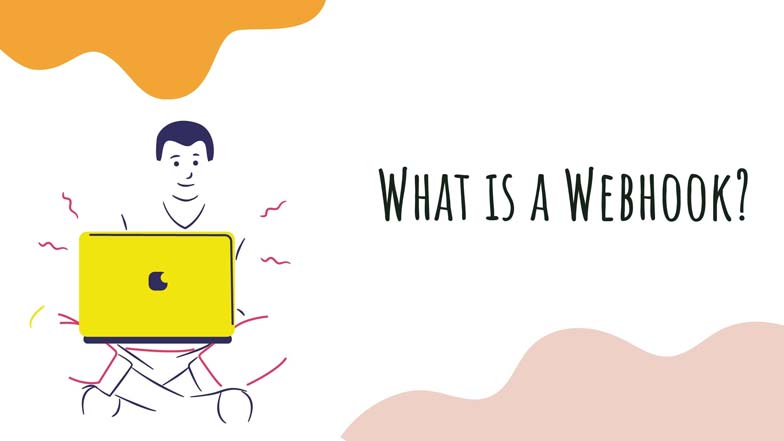According to Contentful, “Webhooks are HTTP callbacks which can be used to send notifications when data in Contentful is changed, allowing external systems to react to changes to do things such as trigger a website rebuild or send a notification to a chat application.”
For example, if you use Stripe to process payments, you can request a callback every time your app processes an order using the Stripe API webhook feature. You can then use this information to update your inventory in BigCommerce or send out confirmations via email or text message using third-party services like Slack or Twilio.
How Does A Webhook Work?
To understand how webhooks work, it’s best to break down that big word into parts. A webhook is a piece of code that tells a specific part of an application to do something. On the other hand, a web request occurs when someone makes an HTTP request to fetch or send data from or to your application. When you put them together, you get yourself a webhook — which simply means an HTTP callback for your app.
What Are They Used For?
A webhook is an HTTP callback. You can use a webhook to notify an application about certain events. For example, uploading an image to a file hosting service and publishing new content on a website. Other examples include Slack notifications, payment confirmation in Stripe, and updating database records in MongoDB. You might have heard about webhooks for receiving automated email responses from your favorite company: marketing emails from Shopify or shipping notifications from UPS.
The Benefits Of Using Web-hooks
Webhooks will save you hours every week by automating your routine tasks. You can get real-time alerts of an event and respond in minutes instead of hours or days later. Your system stays up to date without having to manually refresh it yourself throughout the day, which saves you lots of time on maintenance and monitoring otherwise. It’s also easier for other team members to see what’s going on as they can see exactly what happened and when.
Web-hooks can make processes and events more efficient, saving time and money on software development and maintenance. Since webhooks only require code to be written once, no matter how many times that event happens or how many applications might need it, reducing redundancy in backend processes. This means you can spend less time updating code that already exists to work with new features or automatically notifying customers about an update when you would previously have had to contact each of them manually.
Examples Of When To Use A Webhook
While most commonly used to update other applications with changes in your data, they can be helpful in any situation where you need to get someone else’s attention, including when:
- A customer submits an inquiry on your website.
- You deploy code changes to production.
- An order status has changed.
Any time you want to create action based on events that happen elsewhere.
What About Node JS Hooks and Serverless Functions?
Serverless and NodeJS hooks have become almost synonymous with each other. They enable powerful, scalable, and flexible systems that you can mold to fulfill any number of needs and applications. And when used correctly, they deliver those benefits without running up huge bills from your cloud provider.
Simply put, webhooks are one of those technologies that every developer has to learn at some point in their career. It’s impossible for your application not to have calls into external systems or APIs. Once you know how to use them properly, you won’t want to go back.
